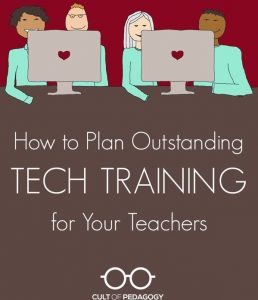I started looking into libraries in developing countries and found a story about a man named Luis Soriano. He is a teacher in Columbia who carries books around on his donkey and rides up to eight hours per day to give students books because none of them have books in their homes. Once he makes it to his location, he unloads the books and creates a makeshift library to help students with their homework, or let them read for fun. He gets these books from the “library” which is also his house. This is a heartwarming story and Soriano is a true hero. But this isn’t a practical solution to giving students access to books. First of all, most teachers and librarians wouldn’t be willing to ride a donkey eight hours a day. Second of all, there simply wouldn’t be enough books even if they did want to do that.
 A UNESCO study published in 2014 points out that books have historically always been for the rich and this is still true today. Books used to be reserved for the elite (kings, scholars, priests, etc). Today, New York and Paris have world class libraries while developing countries have a handful of run-down buildings with old and outdated titles. Access to books is one of the biggest problems in teaching literacy in developing nations. The challenge is finding a way to get access to books for those who have none.
A UNESCO study published in 2014 points out that books have historically always been for the rich and this is still true today. Books used to be reserved for the elite (kings, scholars, priests, etc). Today, New York and Paris have world class libraries while developing countries have a handful of run-down buildings with old and outdated titles. Access to books is one of the biggest problems in teaching literacy in developing nations. The challenge is finding a way to get access to books for those who have none.
UNESCO thinks that the answer to getting text to the unreached is mobile phones. They note that of the estimated world population of 7 billion people, 6 billion now have access to a working mobile phone. To put this number in perspective, they cite that only 4.5 billion people have access to a working toilet. Because mobile devices are plentiful in places where books are not, they may be the key in getting those places access to reading material. The study’s results found the key demographic groups that mobile reading initiatives should target are women and girls, children, older people, beginning readers, and men and boys – basically everyone. The study also outlines key strategies for expanding the footprint of mobile reading. The basic strategy is as follows:
- Diversify mobile reading content and portals to appeal to specific groups.
- Increase outreach efforts to create opportunities for potential users who experiment with mobile reading and learn about its benefits.
- Lower cost and technology barriers to mobile reading.
UNESCO downplays how big of a role cost and technology will be, but it logically seems like the biggest hurdle to me. Even though many people will have access to mobile phones, there are several other issues that could complicate getting access to texts on them. They even say themselves that the most common phones have only about 30 MB of storage. This is only enough room to store around 20 books. Getting books from the cloud could be a possible solution, but it requires a reliable data connection. In rural areas, internet is so spotty that it renders it unusable. Even if they had access, they would still need to be able to afford to pay for it.
A company called Library for All looks to have found a solution to the cost and connectivity issues. They work to bring kids access to books via digital libraries using e-readers. Tanyella Evans, founder of Library for All, notes that many developing countries are already shifting to digital libraries because they are much cheaper than building physical ones. Library for All works with companies to make low cost e-readers pre-installed with their app full of books. This eliminates the connectivity issues since the books are already loaded onto the e-readers. Also, they work with a variety of publishers specific to each country they are launching their programs in. This is to ensure that kids are exposed to a variety of literature, both international and local.
I believe that digital libraries and the use of mobile devices is the route to take when looking to give kids access to reading material in developing countries. We always talk about digital devices taking over as if this is something that is going to happen in the future. But the digital age is now, and not just in the developed world. Tanyella Evans stated that the vast majority of mobile device users are from the developing world. With this in mind, this is the logical route to take when building libraries for those who don’t have access.
Works Cited
(2009, September 15). Biblioburro- The donkey library. Retrieved June 17, 2018, from https://www.youtube.com/watch?v=wuTswmx9TQU&t=201s
Mark, W., & Chew, H. E. (2014). Reading in the Mobile Era. UNESCO. Retrieved June 17, 2018, from http://unesdoc.unesco.org/images/0022/002274/227436e.pdf
(2015, January 29). Getting Kids To Read in Developing Countries With E-books. Retrieved June 17, 2018, from https://www.youtube.com/watch?v=3jWECWnGgTw
Homepage. (n.d.). Retrieved June 17, 2018, from http://www.libraryforall.org/


